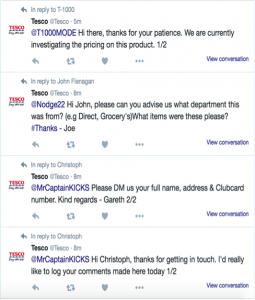Mobile phone applications (‘app’) are a rapidly developing market, which has increased as a compliment to the growth in the use of smartphones. A complimentary product is one that is dependent on another such as a DVD’s to a DVD player. A complimentary product is useless without the core product. The mobile phones in this instance is the core product, and the fact consumer’s lives are often centered on them in recent years (Claussen, Essling and Kretschmer, 2014). Mobile phone applications have become a basic necessity for businesses. Almost every business is expected to have one whether it is for an online retailer or an application for news updates and information. However creating an application is only the beginning, as businesses will need to keep it constantly updated with the rapid technological advances and use of social media connections (Iansiti, 1995). Most importantly businesses need to look at App Store Optimization (ASO) and other channels in which to market their app effectively. Different types of business application will need to market their app in different ways if at all. For example, an app which is directly connected to the business that could result in more sales and/or overall revenue would definitely warrant the financial outlay to market it. On the other hand, an application which is information based and has no direct benefit to the business as it may only be mentioned on the website as an alternative.
Once an application is created it is imperative to effectively handle the continuous development and marketing of the application. Ganguly (2016) explains the five biggest mistakes businesses make when it comes to mobile application marketing. The five mistakes highlighted by Ganguly (2016) are:
- Businesses treat the mobile experience like it’s a desktop
- Building an application without a plan to market it
- Building a website application and trying to pass it off as an application
- Assuming people will come back to use the application for no reason and finally,
- Ignoring the applications customer base.
Of these 5 mistakes I believe one of the most crucial mistakes is creating the mobile application without a plan. Consumers must be aware that you have an application, which can be used as an alternative and or compliment for the website. Although visitors to your website do not need to be bombarded by links to your application it does need to be noticeable. The website below shows an example of a badly advertised application, which was badly signposted and I personally would not have known there was an application available, had I not been looking.
ASO is the process of optimizing mobile applications (‘apps’) in order for them to rank higher against other apps within the App Store and the aim of ASO is to direct more traffic to the applications page. Businesses must have a plan when it comes to market their app. ASO is a new concept but one that is very effective when it comes to application marketing and sustainability. The application market is predicted to have over 268 billion downloads and which could result in revenue generation of approx. $77 billion (Businessdegrees, 2016). Making use of application and their marketing is crucial. ASO has been described as a crucial piece of the mobile app marketing puzzle (Ganguly, 2016) and is therefore a necessity to gain a foothold in this rapidly developing sector. The theory that ASO is a vital marketing tool for applications is indirectly supported through the 2015 report on the ‘Discovery of Ranking Fraud for Mobile Apps’ (Zhu et al., 2015.) The 2015 report highlighted the importance of gaining high rankings for applications have lead some application owners to attempt to ‘cheat’ the rankings. A higher ranking within the app store will then in turn lead to more downloads.
References
Claussen, J., Essling, C. and Kretschmer, T. (2014). When less can be more – Setting technology levels in complementary goods markets. Academy of Management Proceedings, 2014(1), pp.11919-11919.
Businessdegrees.uab.edu. (2016). The future of mobile application | UAB Business Degrees Online. [online] Available at: http://businessdegrees.uab.edu/resources/infographics/the-future-of-mobile-application/ [Accessed 6 Apr. 2016].
Ganguly, R. (2016). App Store Optimization – A Crucial Piece of the Mobile App Marketing Puzzle. [online] Available at: https://blog.kissmetrics.com/app-store-optimization/ [Accessed 6 Apr. 2016]
Ganguly, R. (2016). The 5 Biggest Mistakes in Mobile App Marketing. [online] Available at: https://blog.kissmetrics.com/mistakes-in-app-marketing/ [Accessed 6 Apr. 2016].
Iansiti, M. (1995). Technology integration: Managing technological evolution in a complex environment. Research Policy, 24(4), pp.521-542.
Zhu, H., Xiong, H., Ge, Y. and Chen, E. (2015). Discovery of Ranking Fraud for Mobile Apps. IEEE Trans. Knowl. Data Eng., 27(1), pp.74-87.


